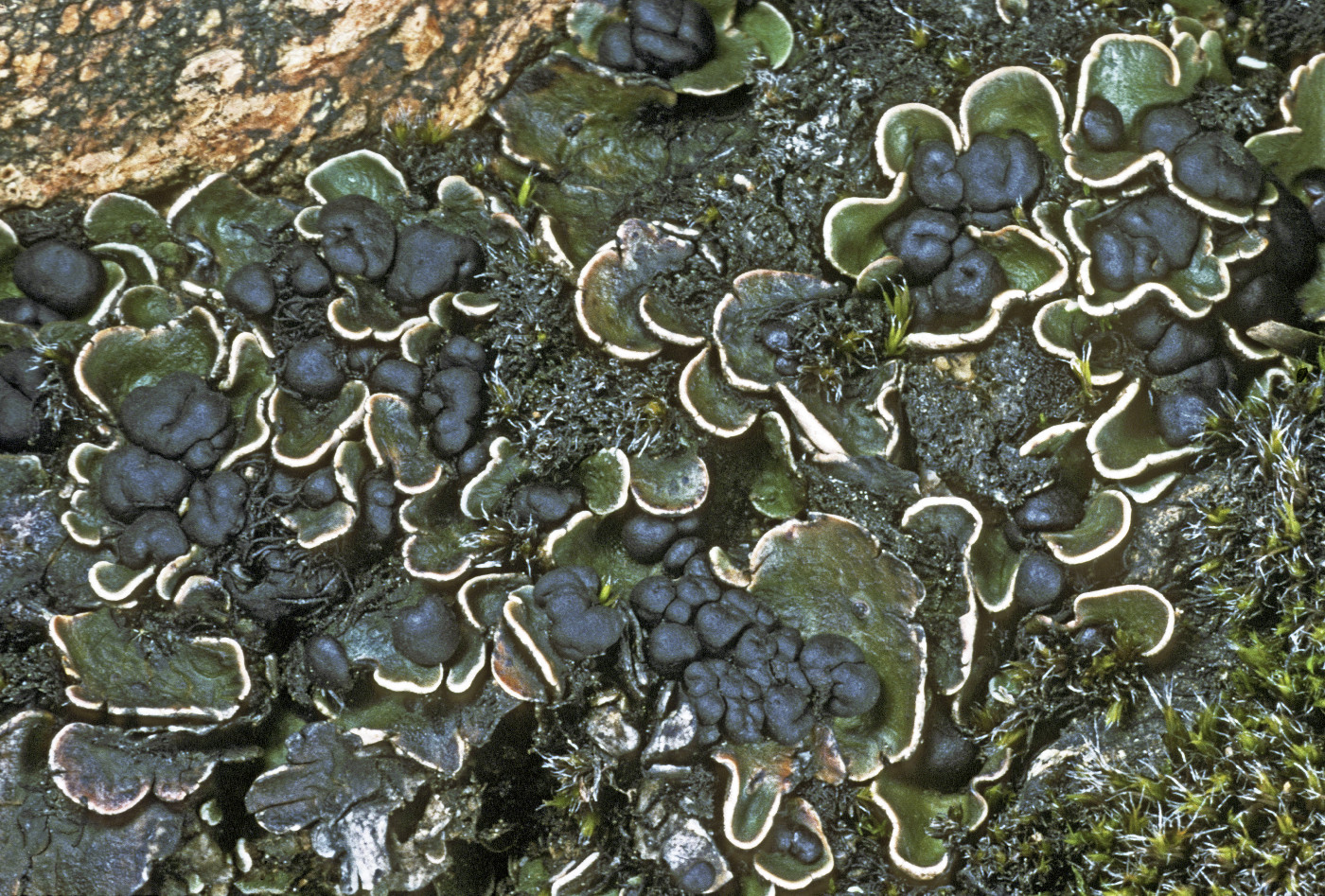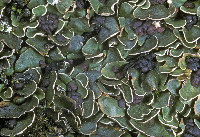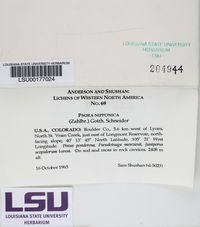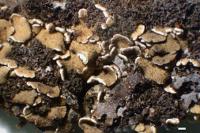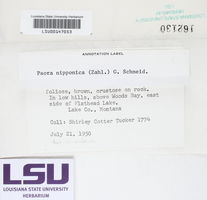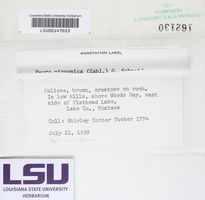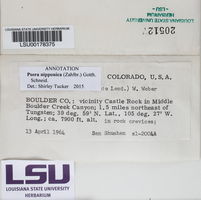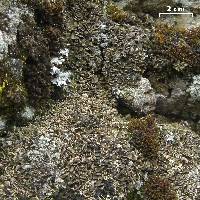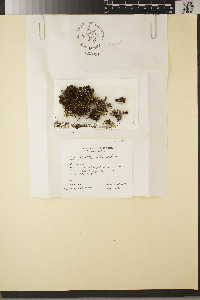
Consortium of Lichen Herbaria
- building a Global Consortium of Bryophytes and Lichens as keystones of cryptobiotic communities -
- Home
- Search
- Images
- Species Checklists
- US States: O-Z >
- US National Parks
- Central America
- South America
- US National Parks
- Southern Subpolar Region
|
|
|
|
Family: Psoraceae
[Lecidea nipponica Zahlbr., moreLecidea novomexicana (B. de Lesd.) R.A. Anderson, Psora novomexicana B. de Lesd.] |
Nash, T.H., Ryan, B.D., Gries, C., Bungartz, F., (eds.) 2002. Lichen Flora of the Greater Sonoran Desert Region. Vol 1. Squamules: up to 10 mm wide, elongate, ascending, concave to weakly convex upper surface: olivaceous or reddish brown to medium brown, dull, epruinose or partly pruinose, smooth or sparingly fissured margin: usually white, down-turned to up-turned, entire or lobed upper cortex: up to 55-140 µm thick, composed of thick-walled hyphae with angular lumina, containing crystals of lichen substances but no calcium oxalate medulla: containing crystals of lichen substances but no calcium oxalate lower cortex: of anticlinally oriented hyphae, containing calcium oxalate lower surface: white to medium brown Apothecia: up to 2 mm diam., laminal, immarginate even when young, dark brown to black, epruinose ascospores: ellipsoid, 10-14 x 5-7 µm Pycnidia: laminal, immersed conidia: bacilliform, 6-9 x 1 µm Spot tests: upper cortex and medulla K-, C+ red, KC+ red, P- Secondary metabolites: gyrophoric acid and trace of lecanoric acid. Substrate and ecology: on soil or rock, usually in rock crevices in some shade, mainly in conifer forests and above tree line, at 1380-3540 m World distribution: Japan and western North America Sonoran distribution: fairly common in Arizona, California and Baja California. Notes: A chemical strain containing anthraquinones in the lower cortex is known from northern California and Idaho (Timdal 1986). |
|
|
|
Powered by Symbiota

